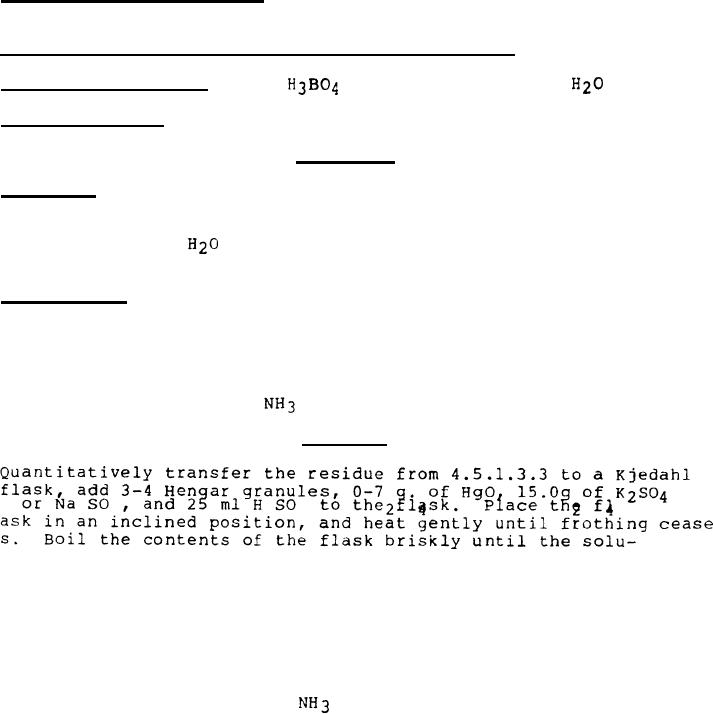 |
|||
|
|
|||
| ||||||||||
|
|  MIL-C-48868E (AR)
METHYLENE BLUE INDICATOR - 1 g methylene blue dissolved in 200
ml ethyl alcohol
HYDROCHLORIC OR SULFURIC ACID STANDARD SOLUTION - 0.1N
BORIC ACID SOLUTION - 4 g
dissolved in 100 ml
HENGAR GRANULES
Apparatus
DIGESTION - Use Kjeldahl flask of hard, moderately thick
well-annealed glass with total capacity of 500 to 800 ml. C o n -
duct digestion over a safety-approved heating device adjusted
to bring 250 ml.
at 25C to a rolling boil in five
minutes.
DISTILLATION - Use a Kjeldhal flask of 500 to 800 ml. capacity
fitted with a rubber stopper. The low end of an efficient
scrubber bulb or trap is passed through the rubber stopper to
prevent mechanical carryover of NaOH during distillation. Use
rubber tubing to connect the upper end of the bulb to the
condenser tube. Trap the condenser outlet to insure complete
absorption of distilled
into boric acid in the receiver.
Analysis
tion clears. Continue boiling for 1/2 hour minimum. Allow the
solution to cool to room temperature. Add 200 ml. H20. cool
the solution to below 25C. Add 25 ml. thiosulfate solu-
tion and mix to precipitate the mercury. Tilt the flask and
add a layer of 100 ml. NaOH solution without agitation. Immedi-
ately connect the flask to the distilling bulb on the condenser.
With the tip of the condenser immersed in the boric acid in the
receiver, rotate the flask to mix the contents thoroughly. Heat
the flask until all of the
has distilled (approximately
250 ml.). Titrate the boric acid solution with the standard
acid using a mixed indicator containing four drops of methyl
red, and two drops of methylene blue solution. Correct for the
reagent blank. Calculate the percent acrylic as follows:
27
|
|
Privacy Statement - Press Release - Copyright Information. - Contact Us |